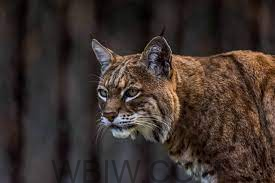
INDIANA – Bobcats are present throughout Indiana, especially in its southern parts and are more commonly seen in the winter.
The Department of Natural Resources collects reports of bobcat sightings, trail-camera photos and mortalities through its Archer’s Index Report, a mammal form, and Snapshot Indiana.
The Archer’s Index relies on volunteer archery hunters to report wildlife observations while they are afield in the fall. There are currently 14 species reported through the Archer’s Index, including birds like wild turkeys and pheasants and mammals such as gray squirrels, cottontail rabbits, coyotes, bobcats and white-tailed deer.
You can help the Indiana Division of Fish & Wildlife by submitting reports of certain mammals of interest.
These mammals can potentially be seen from the comfort of your home, on your way to work, or while out biking, hiking, or camping.
Compiling observations of these species can help identify local and state-wide trends in these rare or elusive mammals.
Snapshot Indiana was a volunteer-based trail camera program designed to collect information about a variety of wildlife species on private property in Indiana.

A bobcat’s diet includes rabbits, mice, squirrels and more. Like all wildlife, bobcats should not be fed or approached by humans.
Bobcats are unlikely to attack except when threatened or protecting their young. If you’re having trouble with a bobcat that’s damaging your property or disturbing your poultry, you may request a nuisance wild animal control permit from DNR. Landowners or lessees may also hire a nuisance wildlife control operator to assist them if they are not comfortable removing the bobcat themselves.
Bobcats may not be removed without a permit.

If you have more questions about bobcats and bobcat sightings, click here.



